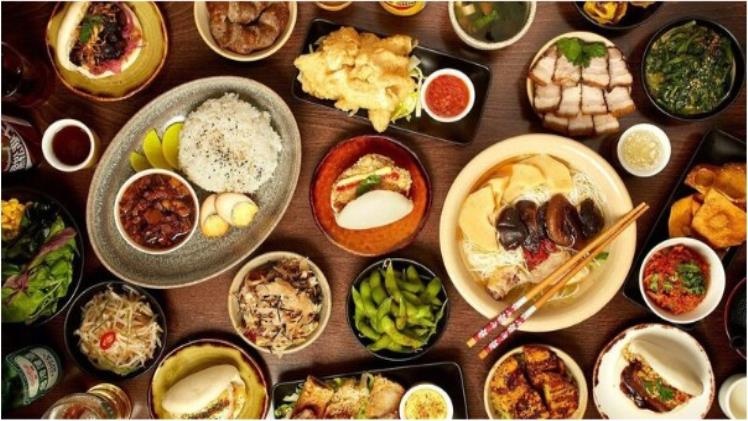Food photos are mesmerizing visual paintings where each dish becomes the main character in a story of flavor, culture and creativity. Enter new88 the world of food photography where every frame is a feast for the eyes and the soul.
Table of Contents
The beauty of food photography
Food photography has a special appeal where color, light and composition blend to turn dishes into works of art.
Vivid colors and light
Great food photography is all about highlighting the colors and textures of the dish. A photo of a bowl of pho with clear broth, fresh greens, and succulent beef, illuminated by natural light, makes the viewer almost smell the aroma.
Or a chocolate cake with icing that shimmers under soft lighting, highlighting each smooth layer. These photos, like a palette, use light and tone to evoke the appetite, whispering that this dish is not just to be looked at, but to be savored.
Storytelling layout
Composition in food photography is an art of installation, where every detail counts. A shot of a table of tapas dishes laid out on a white linen tablecloth, accompanied by a glass of sparkling wine, tells the story of a cozy evening. Or a shot of a plate of broken rice with grilled ribs, fried egg and cucumber neatly arranged, evokes the intimacy of a Vietnamese meal.
The profound meaning of food photography
Food photography is not just an image but a bridge of culture, emotion and creativity, bringing value beyond the frame.
Connecting culture and tradition
Food photography is a way to celebrate culture and tradition through food. A photo of green banh chung (sticky rice cake) on a Vietnamese Tet tray or a plate of Italian pasta with fresh tomato sauce tells the story of the dish’s origin and history. These images, like a book, convey culinary heritage, from preparation to cultural significance, connecting people through shared flavors. They are a reminder of the diversity and richness of world cuisine.
Evoking emotion and passion
Food photography is medicine for the soul, igniting joy and passion for cooking. A photo of a freshly baked loaf of bread with a crispy crust, or a cup of coffee with a heart-shaped foam can bring a warm and happy feeling. Not only do they whet the appetite, but they also inspire people to get in the kitchen, experiment with new recipes, or share a meal with loved ones. These photos, like ripples, spread the passion for food throughout the community.
Diverse styles of food photography
Food photography opens up many styles, from minimalist to vibrant, each style has its own breath.
Minimalist and sophisticated
A popular style is minimalist food photography, which focuses on the food with a monochrome or minimal background. A photo of a bowl of pumpkin soup with a sprig of rosemary on a white background feels elegant and modern. This style, like a haiku, uses simplicity to highlight the natural beauty of the dish.
Bright and vibrant
In contrast, some food photography is vibrant, with tables full of color and detail. A photo of a banquet table filled with Asian dishes, from bright red kimchi to colorful sushi, creates a bustling and cozy feel. This style, like an oil painting, uses color and complex composition to tell the story of culinary richness.
Some food photography ideas
Here are some ideas for creating impressive food photos:

- Light breakfast: Shot of a tray of bread, butter, jam and coffee on a wooden table, with natural light from the window to create a warm feel.
- Traditional dishes: Take a photo of a plate of Vietnamese pancakes with raw vegetables and dipping sauce, on a brocade background to honor the culture.
- Artistic cakes: Take a photo of a cake with melted cream and fresh fruit, using a close-up angle to highlight the texture.
- Street food: A photo of a Hue beef noodle stall with smoke rising from the broth pot, giving a lively and intimate feeling.
Conclude
Food photosis the art of storytelling through food, where each frame is an invitation to taste, culture, and creativity. From bắn cá new88 elegant minimalist shots to colorful banquets, food photography is not only pleasing to the eye, but also connects people through stories of tradition and passion.




